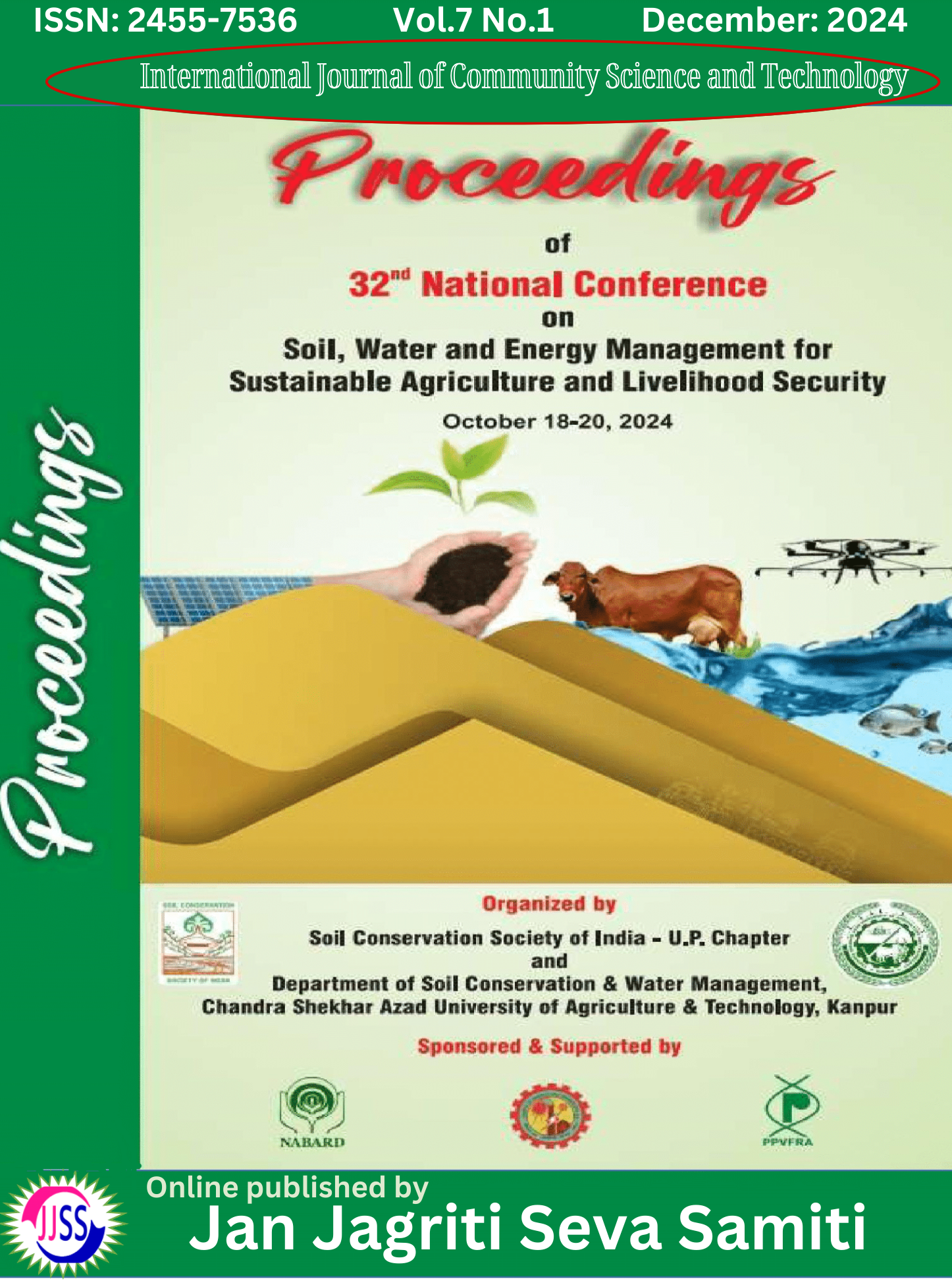A COMPARATIVE STUDY BETWEEN MICROWAVE AND ULTRASOUND-ASSISTED PECTIN EXTRACTION FROM UNRIPE BAEL
Keywords:
MICROWAVE, ULTRASOUND-ASSISTED PECTINAbstract
Bael is an underappreciated indigenous fruit from the Rutaceae group grown in India and its subcontinents. Its nutritional and therapeutic characteristics set it apart from other fruits and make it easily processed (Sonawane et.al 2020). According to (Pawar et.al 2020) all parts of this tree, including the root, leaf, trunk, fruit, and seed, are beneficial for a variety of diseases. Unripe and ripe fruit are considered astringent, digestive, and stomachic and are used for dysentery and diarrhea. Theleaf decoction is used to treat asthma, acute bronchitis, inflammation, jaundice, hypoglycemia, and other ailments. Fresh juice from the leaves is consumed with honey as a laxative and febrifuge.
Pectin promotes plant growth, shape change, development, and defense. It's used to lower blood
cholesterol and treat gastrointestinal issues. It is claimed that variations in total pectin and alcoholinsoluble solids in bael fruit during growth and ripening did not differentiate between pectin fractions (Anup et.al 2017). Microwave-assisted extraction is a green extraction technology that improves repeatability, simplifies handling, reduces solvent usage, and requires less energy without compromising extraction yield. Microwave-assisted extraction is an alternate method for releasing bioactive components from waste food resources (Thirugnanasambandham et.al 2017). Fruit pulp from Aegle marmelos has a high concentration of antioxidant chemicals in addition to vitamin C, E, and carotene (Rajan et.al 2011).
In microwave-assisted extraction, plant molecules are heated dielectrically by being exposed to microwave radiation (Sandarani et.al 2017). Microwave-assisted extraction reduces extraction time, solvent usage, and increases extraction rate compared to conventional methods (Tongkham et.al 2017). The choice of solvent is critical to the extraction process. Using conventional procedures in combination with new technology, such as ultrasonic-assisted extraction, can increase extraction efficiency (Thuy et.al 2022). Ultrasound-assisted extraction is a secure, effective, and sustainable method that yields a higher-purity finished product within minutes (Karbuz et.al 2021). Ultrasoundassisted extraction is a non-thermal approach that has been researched for extracting plant components(Yousuf et.al 2018). Microwave-assisted extraction utilizes non-ionizing radiation (Lasunon et.al 2022). Ultrasound-assisted extraction (UAE) extracts chemicals from plant matrices using solvents and ultrasound energy. Ultrasounds are mechanical waves with frequencies that exceed the audible frequency range of human hearing. These waves propagate across solid, liquid, or gaseous mediums, causing the displacement and dislodgement of molecules from where they initially were (Kumar et.al 2019). Microwave heating is more effective than conventional heating because it generates heat instantaneously from the reorientation of water molecules inside the plant during the heating process. In order to facilitate the temperature needed for the extraction process, microwave energy produces instantaneous and fast heating (Sarah et.al 2018). Plant cell wall components that are capillary- porous and have a greater capacity to absorb water are enhanced by microwave assisted extraction. This alteration increases the yield at which various plant cell wall analytes, including cellulose, hemicellulose, and pectin, may be extracted (Spinei et.al 2022).
References
Sonawane, A., S.S. Pathak and R.C. Pradhan, 2020. Optimization of a process for the enzymatic extraction of nutrient enriched bael fruit juice using artificial neural network (ANN) and response surface methodology (RSM). International Journal of Fruit Science., 20(sup3), S1845-S1861.
Pawar, S. S., T.G. Deokar and M.G. Jadhav, 2015. Comparative study of extractive values of the leaf, unripe and ripe fruit extracts of Aegle marmelos (L). Conference: State level seminar on Recent Advances in Life Sciences.,2015.
Anup KB., A. Dikshit and K.T. Dileep, 2017. Pectin Transitions during Growth and Development of Bael (Aegle Marmelos (L.) Correa) Fruit. Anal Chem Ind J., 2017;(1):119.
Thirugnanasambandham, K and V. Sivakumar, 2017. Microwave assisted extraction process of betalain from dragon fruit and its antioxidant activities. Journal of the Saudi Society of Agricultural Sciences, 16(1), 41-48.
Rajan, S., M. Gokila., P. Jency., P. Brindha and R.K. Sujatha, 2011. Antioxidant and phytochemical properties of Aegle marmelos fruit pulp. Int J Curr Pharm Res, 3(2), 65-70.
Sandarani,M.D.J.C, 2017. A review: different extraction techniques of pectin. Journal of Pharmacognosy & Natural Products, 3(3), 1-5.
Tongkham, N., B. Juntasalay., P. Lasunon and N. Sengkhamparn, 2017. Dragon fruit peel pectin: microwave-assisted extraction and fuzzy assessment. Agriculture and Natural Resources, 51(4), 262-267.
Thuy, N. M., Ngoc, P. T. B., & Tai, N. V. (2022). Effect of conventional and ultrasonic-assisted extracts on betacyanin content of red dragon fruit (Hylocereus polyrhizus). Food Research, 6(3), 389-395.
Karbuz, P., & Tugrul, N. (2021). Microwave and ultrasound assisted extraction of pectin from various fruits peel. Journal of Food Science and Technology, 58(2), 641-650.
Yousuf, O., Singh, A., Shahi, N. C., Kumar, A., & Verma, A. K. (2018). Ultrasound assisted extraction of pectin from orange peel. Bulletin of Environment, Pharmacology and Life Sciences, 7(12), 48-54.
Lasunon, P., & Sengkhamparn, N. (2022). Effect of Ultrasound-Assisted, Microwave-Assisted and Ultrasound-Microwave-Assisted Extraction on Pectin Extraction from Industrial Tomato Waste. Molecules, 27(4), 1157.
Kumar, K., Srivastav, S., & Sharanagat, V. S. (2021). Ultrasound assisted extraction (UAE) of bioactive compounds from fruit and vegetable processing by-products: A review. Ultrasonics Sonochemistry, 70, 105325.
Sarah, M., Hanum, F., Rizky, M., & Hisham, M. F. (2018, February). Microwave-assisted extraction of pectin from cocoa peel. In IOP Conference Series: Earth and Environmental Science (Vol. 122, p. 012079). IOP Publishing.
Spinei, M., & Oroian, M. (2022). Microwave-assisted extraction of pectin from grape pomace. Scientific Reports, 12(1), 12722.
Siddiqui, A., Chand, K., & Shahi, N. C. (2021). Effect of process parameters on extraction of pectin from sweet lime peels. Journal of The Institution of Engineers (India): Series A, 102, 469-478.
Azad, A. K. M., Ali, M. A., Akter, M. S., Rahman, M. J., & Ahmed, M. (2014). Isolation and characterization of pectin extracted from lemon pomace during ripening. Journal of Food and Nutrition Sciences, 2(2), 30-35.
Surolia, R., Singh, A., & Bhatnagar, T. (2022). Comparative study on the Characterization and Antioxidant properties of Bael (Aegle Marmelos) Pulp, Shell and Seed Pectin.

